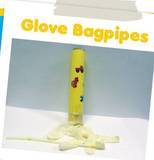Shop
02291
https://www.under5s.co.nz/shop/Hot+Topics+Articles/Toys+Books+Play/make+your+own+songs+and+music/8+ways+to+nurture+music+at+home.html
8 ways to nurture music at home
|
Find out how you can create music at home and incorporate it into your kids daily routine. There are a lot of easy activities you can do together to help nurture their love of music, even if you’re not very musical yourself.
|
You might also be interested in ...
Glove bagpipes
Such fun! Kids will love these glove bagpipes. Teach them to play different notes and make up a band with their friends. They’ll learn about music and rhythm, perseverance, concentration and hand-eye co-ordination skills.
Traditional nursery rhymes Part 1
When was the last time you sang a nursery rhyme? It may not have been since your own childhood or you may just be a little bit rusty, so here are the words to a few favourites to help refresh your memory and to sing to your own kids.
join usJoin us on social media for all our latest news. |
sign upSign up and receive our latest newsletters. |
|







There are a lot of easy activities you can do together to help nurture their love of music, even if you’re not very musical yourself.
1. Make up songs
Make up songs based on simple melodies you know.For example, you might remember singing ‘I’m the King of the Castle’ when you were a child?
This melody is one of the simplest and you can use it to sing about what you’re doing in your day or just make up sentences and sing them on the same notes.
2. Move to music
Play music with a strong beat but no lyrics (adult lyrics are often distracting for young children).Move in time with the music: stamp, jump, creep, change direction when the music changes or when a different verse starts
Or pat the beat on different body parts including those ones less known like neck, shin, heel, or wrist.
3. Use colourful accessories
Older children can use scarves or pieces of colourful fabric (or even a tea towel) to swing and dance with.Encourage them to use the space behind, beside and above them, to help them learn about space and positional language.
This movement and the moving of objects is great for extending their eye strength beyond the limits of screens.
4. Make your own sounds
Look for found sounds in your home. You don’t need to spend lots of money on particular toys.Find things which young kids can bang and that aren’t going to break.
The pot cupboard is a good place to start. Use plastic boxes, cardboard boxes, wooden or plastic spoons as beaters.
Find things with ridges that kids can scrape such as tubing, cake racks, toast racks, plastic meat trays.
Or find hand-held containers which you can use to fill with objects such as buttons, paper clips, small stones, rice etc) and make all sorts of different sounds with. Just make sure the lids are childproof or securely taped closed.
5. Make music outside
When you go outside, look for objects that make sounds: crunchy autumn leaves, rocks, sticks, and shells from the beach, and play them in different ways.6. Play games with sound.
Sing ‘do do do’ down an empty toilet roll or Gladwrap roll.Say ‘hello’ in different ways into a small bucket or large cup.
Hide sounds in a box then play them and ask kids to identify them by their sound (paper, car keys, water bottle, cellophane, cutlery, opening a banana).
Make a drum kit from different sized cardboard boxes then put on some music and jam on the ‘drums’ using wooden spoons.
Try to identify who is coming home by their footsteps.
Creating music together gives us opportunities to talk to our children about what we are doing.7. Talk together
'Where is the scarf dancing?' Use words like behind, beside, above, and under.
Play sounds loudly, softly, quickly, slowly; scrape, bang and shake.
By using words in context we build meaning for language, while creating quality sharing experiences with our children.
8. Have fun
The most important thing is to have fun with sound.As well as engaging lots of senses in the learning, you could be opening up a lifelong love of music.
Source: This article was written by Janet Channon, Director of Kids Music Company - holistic, user-friendly kids music classes and activities to help babies, toddlers, pre-schoolers and school-age children develop their bodies and brains, setting them up for life.